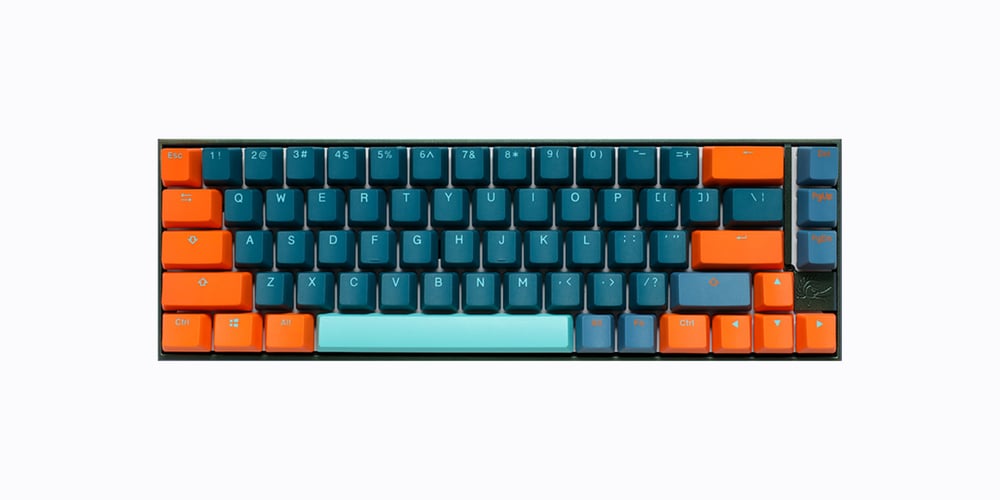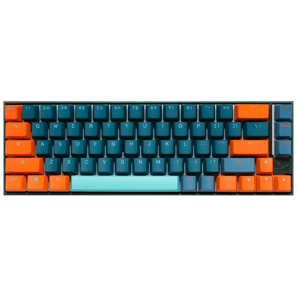Ducky has carved out a reputation for itself as a supplier of top tier mass-produced mechanical keyboards. While their popularity initially skyrocketed thanks to the success of the One 2 Mini and its variants, their other keyboards also offer a fantastic value/performance proposition.
Now that custom/smaller keyboards are becoming more and more popular, Ducky is trying to tap into that market with keyboards such as this Mecha SF. The ‘Mecha’ means that it’s part of their more premium line (with an aluminum case as opposed to a plastic one) and the ‘SF’ stands for 65, which is the size of the keyboard. It’s a board that people have been asking about for a long time, so there certainly are some expectations here. We’ve sent one over to our reviewer to find out of the Mecha SF lives up to those expectations.
At A Glance
Ducky Mecha SF
Ducky has done it once again. If you’re looking for a quality 65% mechanical keyboard and you don’t want to bother with sourcing parts and building it yourself then this is one of the best purchases you can make right now.
Pros
- Beautifully finished case
- Rock solid build quality
- Great PBT keycaps
- Unique aesthetics
- Great typing experience
Cons
- Would’ve been nice to see a hotswappable PCB
- Cable isn’t as high quality as the rest of the board
Specs
| Form Factor | 65% |
|---|---|
| Switches | Cherry MX Brown, Cherry MX Black, Cherry MX Blue, Cherry MX Red, Cherry MX Silver, Cherry MX Silent Red |
| PCB | Non-Hotswappable |
| RGB | Yes |
| Height | 3.9cm |
| Width | 32.5cm |
| Length | 10.5cm |
| Weight | 870g |
First Impressions
I have been waiting for this keyboard for quite a while, in the sense that I asked for a Mecha version of the SF ever since I reviewed the Ducky Mecha Mini. It’s my opinion that a 65% board is the perfect mixture between a compact and portable size for most people, so it’s nice to see that Ducky has finally released Mecha versions of their SF board. What’s a bit strange is that (as of me writing this review) the board is only available in two limited edition colorways. I hope that they’ll also release the Mecha SF as part of their regular lineup in the future so that everyone can enjoy this board, but I have no official confirmation of that.
To the board then. As I mentioned, the Mecha SF currently comes in two colorways, namely Emerald (which is the one that I am reviewing) and Ocean. As you can see these have a special keycap set, but the case has also received a special treatment in the form of an iridescent finish. On the Emerald version it’s a deep, almost British racing green, but the actual color changes depending on how much light it’s exposed to (and also the angle of the light) so depending on how you’re looking at it you’ll see flashes of lighter green and even purple. Despite the fact that green isn’t my favorite color I have to say that I absolutely love this finish. It gives the board a high-end look, and that is only exaggerated by the weightiness of the aluminum case.
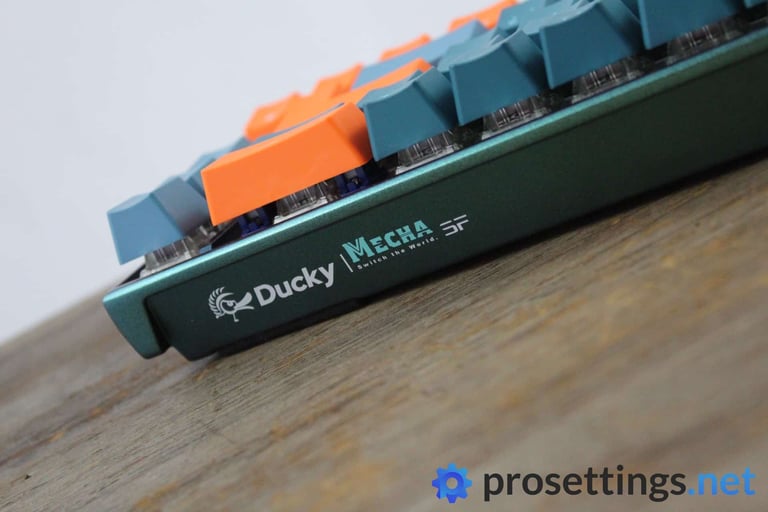
The keycaps are also unique. Here you get a mixture of orange, ocean blue, and a darker green/blue blend. I’m not a designer so pardon my lack of accurate color descriptions, but hopefully the photos will speak for themselves. Once again this color scheme isn’t exactly my cup of tea (I prefer more muted colors for my home setup) but there’s no doubt that this is a nice set. The blue of the spacebar returns in the legends on the keycaps, and the same goes for the orange of the accent caps. The finish and keycap set make this board look far more premium than you average black board with shine through caps, and I like that they’ve gone with that approach even though the color choices aren’t for me personally.
Thanks to the decently thick aluminum case this keyboard feels really heavy and sturdy. Any flexing or creaking is of course nonexistent so on the durability front I’d say we’re all good here.
One caveat that I should mention is that the (PBT) caps are not shine through, meaning that if you’re a huge fan of RGB LED lighting you might be a little bit disappointed. The white plate that the switches sit on does a good job at making those LEDs shine a bit brighter (since the light bounces off of it) but you do miss that ‘wow factor’ that you get with caps that are shine through. I don’t mind that at all (my main board has solid caps as well and I don’t miss the RGB) but it is important to note.
Packaging
Inside the box it’s the usual Ducky affair: you get a pretty good keycap puller (it’s a big step above the plastic pullers that you usually get), the usual documentation, a USB-C cable, and a bunch of extra keycaps.
Despite the fact that I love the inclusion of the extra caps and the trouble they go through to include a more premium keycap puller I have to say I would’ve liked to see a better cable. I’m not talking high tier coiled cables with aviator connectors here, as those would drive up the price by a big margin, but even just a braided one with a matching color would not look amiss here and be a fun little extra with a limited edition board. That’s just a small note though, and it won’t influence my opinion on the board.
Features and Build
The Mecha SF is a 65% keyboard. As such it does not have a numpad or a dedicated row of function keys, but of course you can access these keys by pressing the function (Fn) button in combination with other keys. What is odd is that none of the keycaps have indicators as to what their second function is except for the 0 and – key, which have ‘F10’ and ‘F11’ printed on the front. This perhaps does make it slightly easier to find the function key that you wanted to press but I personally would’ve liked all keys to be clean on the front. This isn’t a huge problem as you don’t notice the printing all that much, but still.
Of course the case and keycaps are what makes this board so special, and Ducky really delivered on this front. The special colors and case finish really give this board a unique look, and that can be a very appealing selling point for people who desire something else than the regular black on black boards that you can usually buy but don’t want to build their own keyboard. It would be cool if Ducky started producing more colors for their cases like this one in the future, but I understand that would somehow lessen the appeal of making them limited so I kind of get it if they would choose to keep these special editions limited.
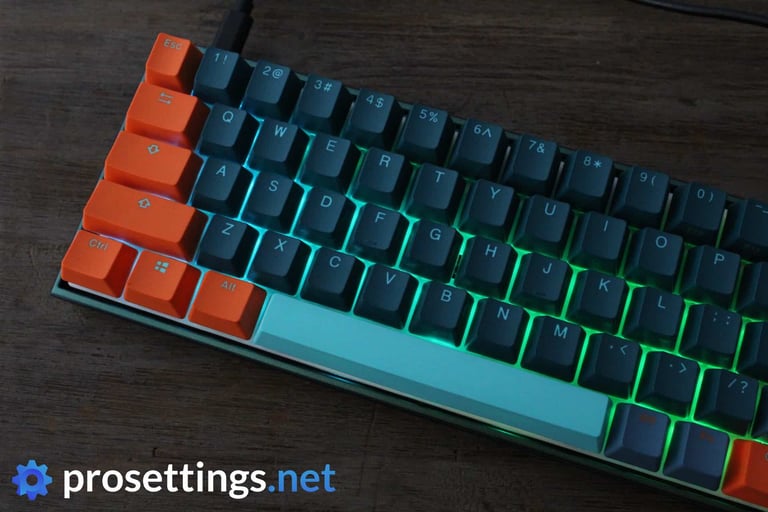
The keycaps are, as we’ve come to expect from Ducky, high quality as well. These PBT caps are thick and have a slightly textured feeling to them that I really like. Ducky has been using PBT caps even back when thin and cheap ABS was the standard material choice among keyboard manufacturers and their stock caps are still among the best in the mass production business, even with some manufacturers moving towards PBT in recent times.
On the bottom of the case there are four thin rubber feet that do a great job at keeping the board in place. Admittedly I rarely have any issues with keyboards sliding around, but it’s still good to know that this Mecha SF will stay put. There are also two flip up feet in case you want to put the board at an angle. These also feel sturdy and have a rubber element on the bottom, so no worries on that front either.
Performance and Everyday Usage
Ducky keyboards come with Cherry MX switches. In the enthusiast community, these have gotten quite a bad rap over the past couple of years but I personally don’t have any real problem with Cherry MX switches. Yes, there are better switches out there, but those also usually cost more money. If you want top tier components in every aspect of a keyboard it’s going to come out to multiple hundreds of dollars, so I personally don’t quite like the comparisons between production boards and high tier custom boards that some people make. That said: I wouldn’t mind seeing what Ducky could come up with should they decide to produce their own switches like some other manufacturers are also doing.
With that little rant out of the way I’ll get to the switches on this particular board: they’re Cherry MX Browns. These are among the most well known and most often used switches in the world, and that’s for a reason. They offer a good middle ground between being ultra tactile and linear, without being overly loud. Of course that ‘middle ground’ thing is one of its biggest criticisms, seeing as it’s neither here (tactility) nor there (a smooth linear feeling) but if you’re after a switch that has a bit of a bump the Browns are a good idea.
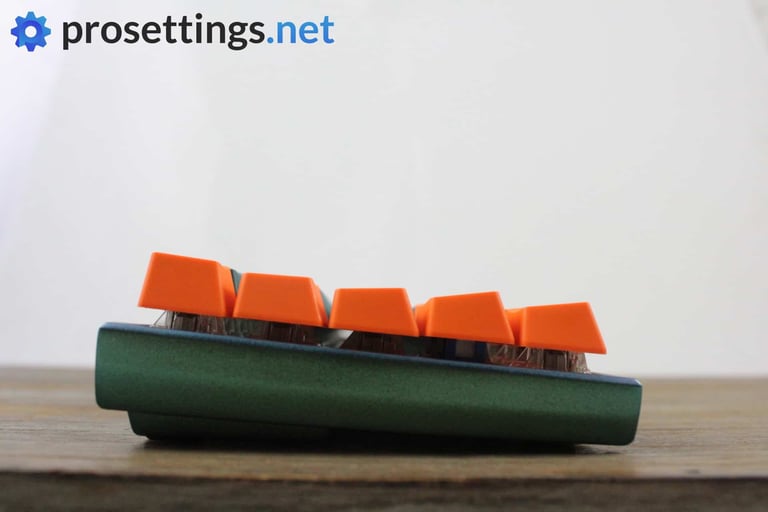
Speaking of switches: I do think it’s a bit of a missed opportunity that this board doesn’t have hot swap functionality. One of Ducky’s other recent limited edition boards, the Year of the Rat, does allow you to swap switches without soldering so it’s not as if Ducky doesn’t want to make these kinds of boards for some reason. Especially with a board that’s aimed more at the premium market (of mass produced boards, that is) it would’ve been cool to allow people to swap switches.
The switches and stabilizers that are on the board do perform nicely though. The Browns do what they should do and, perhaps more importantly, the stabilizers are pretty darn good, making for a board that feels and sounds pretty good. The board does not feel or sound hollow when using it (there’s a bit of case ping if you really mash your keys but it doesn’t bother me personally) and if you’re after a premium typing and gaming experience this is one of the best production boards out there right now.
As with all of Ducky’s boards this one has to be controlled on the board itself as it’s completely driverless. For me personally that’s fine as I don’t usually sit down to make very intricate macros or lighting profiles, but if you are someone who does those kinds of things you will want to reserve some time as it can be quite a bother to program an entire board without software. Don’t get me wrong: I love the driverless functionality but some optional software to program more detailed profiles would not go amiss if you ask me. The people at Ducky told me that they’re working on software a while ago, but seeing as I still have not heard or seen anything on that front I’m assuming that’s not on the horizon just yet.
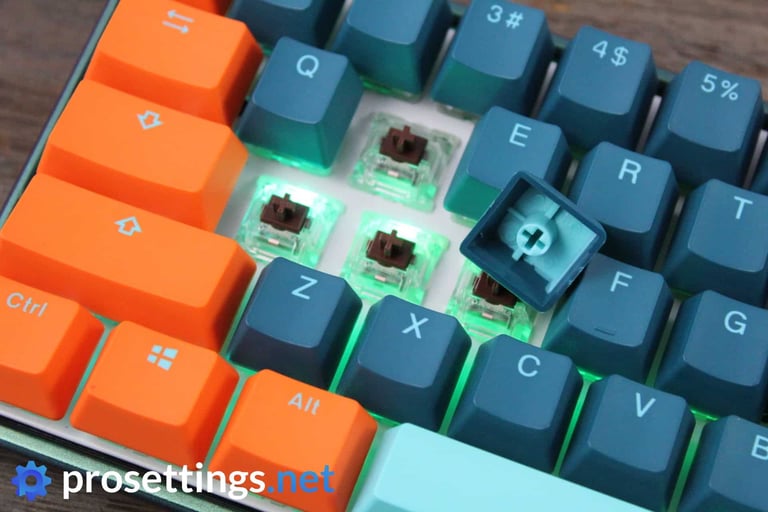
In short, this keyboard can rather easily be summarized: it feels and sounds absolutely great for productivity and gaming (of course the board performs wonderfully for gaming with its N-Key Rollover and 1000Hz polling rate) so if you want to add a bit of flair to your setup without spending the money on a custom board (and waiting ages for parts to arrive in some cases) this is a good shout.
Sound Test
Ducky Mecha SF Review – Conclusion
Ducky has done it once again. If you’re looking for a quality 65% mechanical keyboard and you don’t want to bother with sourcing parts and building it yourself then this is one of the best purchases you can make right now. There are some things I would’ve liked to see different: a hotswap PCB would’ve been absolutely amazing, and perhaps a slightly nicer looking cable could’ve been included, but these are minor complaints that take nothing away from the actual board itself.
From the beautifully finished case to the eye catching keycaps: this board is sure to turn heads, and luckily the performance matches the looks. Yes, it is slightly more expensive than some other mass produced boards, but you’re getting quality materials throughout that have been combined by designers who know their keyboards. Thoroughly recommended.
This product was received for free from the manufacturer and given to our reviewer to test and review. Brands and manufacturers have no editorial control over our reviews. For more information, check out our review FAQ.


